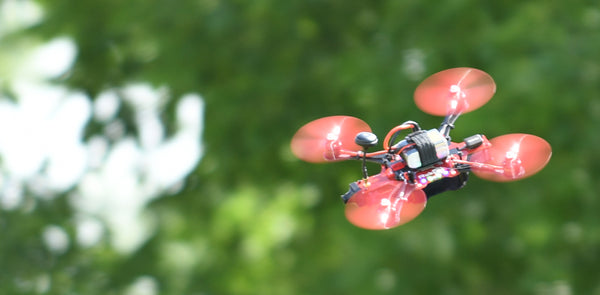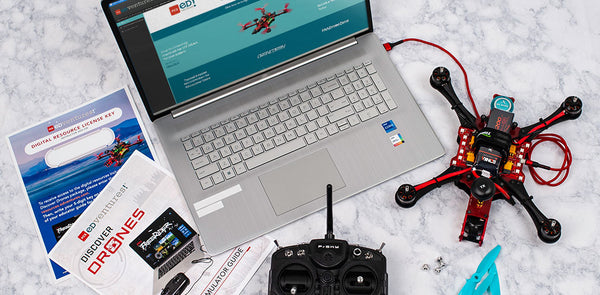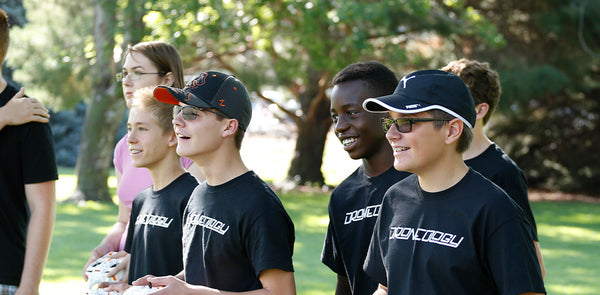
Invigorating Learning and Career Technical Education with Discover Drones
If you’ve ever been in a high school classroom, you’ve probably heard the familiar phrase: “When am I ever going to use this in the real world?” While the refrain stems from a place of disgruntlement, there is merit to the student’s expression of frustration.
Outside of a learning environment, can you remember the last time you used the Pythagorean Theorem, the Bernoulli Principle or basic chemistry in your day-to-day life? It’s true that these lessons are used as foundational stepping stones for continued learning. It follows that, while they're not being used daily, these lessons are still constructive to continued education. But the root of the question still goes unanswered.
Why aren’t students learning about the things they are interested in? Why aren’t they learning about the things they will use in the real world of work?
This is where Career and Technical Education (CTE) programs come in. Focusing on making classes applicable to learners, they teach useful skills that can be applied to future careers. Of the multitude of practical skills being taught in CTE environments (engineering, robotics, programming), one of the most exciting new avenues of study takes learners to the skies — Drones.
Unmanned Aerial Vehicles (UAVs) provide a compact machine for students to practice and learn about engineering, programming, configuration, robotics and electrical systems, all while developing hands-on skills. With the right program, drones can also give a substantial head-start for careers in agriculture, digital media, information technology, computer science and programming.
Discover Drones – the groundbreaking open-source, modular drone learning solution from PCS Edventures – is designed to provide students and CTE spaces with enhanced STEM learning opportunities. From challenging learners to devise ways to solve global issues with the help of drones to becoming seasoned pilots with a myriad of career and degree-focused training, Discover Drones provides students with hands-on knowledge of one of the fastest growing technologies.
The program has been used to great success as the sole focus or as a complementary unit in CTE learning environments, high school classrooms and after-school programs across the nation. (Learn more in our white paper, How to Enrich your Classroom with Discover Drones.) Below, you’ll see how as a turn-key program, Discover Drones can fit into a wide range of learning pursuits and expand existing lessons with invigorating skills, training and knowledge.
Pre-Engineering
This track is one of the easiest in which to integrate drones. RubiQ, the modular drone included in any Discover Drones package, allows students to build their UAV from the ground up — a vital skill for any engineer.
Starting with a box of parts, students construct a high-speed quadcopter and explore the different components of the drone. This allows for a higher level of expertise while also building troubleshooting competence. With this intimate knowledge of the drone’s parts and pieces, advanced engineering students who complete the Discover Drones curriculum and training will be well equipped to pursue, design and prototype their own UAVs.
Electronics
RubiQ also provides students with an exploration of the world of electronics. This drone utilizes a printed circuit board, making it easy to see how the components fit together to accomplish different tasks as the learners work through the build. This circuit board is a great starting place for teaching about different electrical components and concepts in a tangible way. This allows educators and students to explore expanded lessons, like how a drone efficiently communicates with its battery, motors, camera and flight controller.
Information Technology (IOT and Data)
Drones are a part of the Internet of Things (IoT) — the network of “smart” objects that connect to enhance efficiency and provide advanced services. Drones participate through data-gathering, such as surveillance of an area to monitor endangered species or crop health. They can also be used for deliveries and immediate transportation of objects.
While the spotlight on drones is centered fully on their ability to fly, transport and record from once-inaccessible places, there’s actually been an incredible explosion of need for behind-the-scenes analytics and study. Drones are able to reach new places, record new data and invigorate different industries, which means there are wide-spread opportunities for drone-savvy data analysts. By learning with drones, students are getting a leg-up in emerging careers as the UAVs they’re working with give them direct skills and experience with the IOT, new technologies and developing commerce.
Agriculture and Digital Media
While RubiQ does not utilize the pricey tech and gadgets used for advanced crop inspection or Hollywood-grade aerial videography, Discover Drones gives students a level of proficiency that prepares them to work with more sophisticated (and more expensive) drones in the future.
Discover Drones teaches FAA regulations as well as drone courtesy, laws and safety, ensuring that learners are informed, secure and responsible pilots. The flight experience, both with the simulator and the real world piloting practice included in the package, trains students for the manual operation of drones and provides them with an excellent introduction to a drone-filled future.
Computer Science and Programming
RubiQ’s flight controller is programmed using open-source software (OSS). Not only are the programs continually updated with the newest advancements, but the code used by the drone has a degree of flexibility not available with other learning solutions.
While the Discover Drones curriculum does not require hard-coding the drone, students studying advanced computer science and programming could alter the code, adding new features they can see in real-time. Even if you're not looking to get knee-deep in the source code, RubiQ gives students the opportunity to practice troubleshooting. As a typical standard in most computer science curriculum, the drone allows learners to build, configure and troubleshoot issues that arise as they fly, crash and rebuild.
On top of all of these applications, the Discover Drones curriculum, when paired with complimentary lessons like the Drone Pilot Ground School, helps students prepare for their Part 107 or TRUST test. The Part 107 certification is required for commercial drone piloting, while the TRUST test applies to all other drone pilots.
Achieving a Part 107 certification, in addition to their flying experience, sets students apart when it comes time to search for a job. Learn more about how easily Discover Drones pairs with a Part 107 prep course in our article: A Solid Foundation Paves The Way To Opportunity.
Conclusion:
Ultimately, how an educator chooses to implement UAVs in their CTE or conventional classroom is entirely up to them and the needs of their learners. Whether it’s a quick lesson or an in-depth semester, Discover Drones has the ability to invigorate any learning environment. With classrooms and clubs across the United States already seeing incredible success, the Discover Drones program increases participation, retention, STEM outlook and student career and degree opportunities.
Curious about drone programming?
View the Discover Drones as an Instructional Platform webinar recording, where our expert panel of drone teachers, trainers and administrators discuss how to successfully use drones as an educational platform.
If you’re interested in learning about our drone professional development courses, head over to the Discover Drones Training Institute:
Authors: Renee Michalson and Thayne Casper








